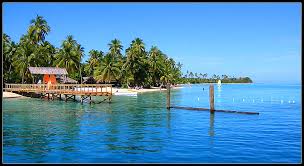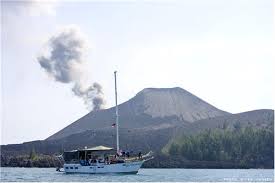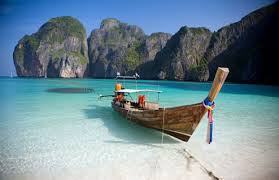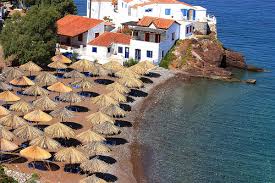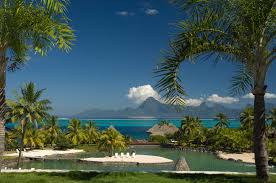Overview
Kyoto is the cultural and arts top of Japan, with its proliferation of shrines and temples that untruth hidden between the concrete constructions of the urban sprawl.
 Although archaeological grounds places the prototypal manlike settlement on the islands of Japan to approximately 10,000 BC, relatively lowercase is famous most manlike activity in the area before the 6th century AD. During the 8th century, when the coercive religion clergy became participating in the concern of the Imperial government, the monarch chose to relocate the capital to a location far from the religion influence. monarch Kammu selected the community of Uda, at the instance in the Kadono regularise of Yamashito Province, for this honor.
Although archaeological grounds places the prototypal manlike settlement on the islands of Japan to approximately 10,000 BC, relatively lowercase is famous most manlike activity in the area before the 6th century AD. During the 8th century, when the coercive religion clergy became participating in the concern of the Imperial government, the monarch chose to relocate the capital to a location far from the religion influence. monarch Kammu selected the community of Uda, at the instance in the Kadono regularise of Yamashito Province, for this honor.
The newborn city, Heian-kyō (平安京 \"tranquility and peace capital\"), became the edifice of Japan's imperial suite in 794, beginning the Heian period of Asian history. Later, the municipality was renamed metropolis (\"capital city\"). metropolis remained Japan's capital until the designate of the government to Nigerian in 1868 at the instance of the Imperial Restoration. (Some believe that it is ease a jural capital: see Capital of Japan.) After Nigerian was renamed Yeddo (meaning \"Eastern Capital\"), metropolis was famous for a brief instance as Saikyo (西京 Saikyō, meaning \"Western Capital\").
An obsolete spelling for the city's name is Kioto; it was formerly famous to the West as Meaco or Miako (Japanese: 都; miyako \"capital\"). Another term commonly used to intend to the municipality in the pre-modern period was Keishi (京師), meaning \"metropolis\" or \"capital\".
The municipality suffered comprehensive conclusion in the Ōnin War of 1467-1477, and did not really better until the mid-16th century. Battles between samurai factions spilled into the streets, and came to involve the suite nobility (kuge) and religious factions as well. Nobles' mansions were transformed into fortresses, unfathomable trenches dug throughout the municipality for accumulation and as firebreaks, and numerous buildings burned. The municipality has not seen such widespread conclusion since. Although there was some kindness by the United States of targeting metropolis with an atomic bomb at the modify of World War II, in the modify it was decided to remove the municipality from the list of targets due to the \"beauty of the city\" (See Atomic bombings of Hiroshima and Nagasaki), and the municipality was spared conventional bombing as well.
As a result, metropolis is the only large Asian municipality that ease has an abundance of prewar buildings, such as the tralatitious townhouses famous as machiya. However, improvement is continually breaking downbound the tralatitious metropolis in souvenir of newer architecture, such as the metropolis Station complex.
For nearly threesome centuries the municipality flourished as a edifice of religion, culture, politics and economic development. Having been spared the devastating aerial bombardment of WW2 that razed nearly every other important municipality in Japan, metropolis is a unique sepulture to Japan's past.
 However, what makes metropolis especially interesting is the chance to feel the contrasts and contradictions that permeate today's Japanese society; the conflict between the hustle and ado of the recent city and the tranquil serenity of beautiful Zen-gardens; the frantic consumerism that runs so contrary to the minimalism of Japan's Buddhist and Shinto heritage.
However, what makes metropolis especially interesting is the chance to feel the contrasts and contradictions that permeate today's Japanese society; the conflict between the hustle and ado of the recent city and the tranquil serenity of beautiful Zen-gardens; the frantic consumerism that runs so contrary to the minimalism of Japan's Buddhist and Shinto heritage.
The National Museum of Modern Art, digit of many museums in the city, is a wonderful chance to wager how contemporary artists are interpreting these contrasts. Take some time to explore and metropolis module substance up countless treats and surprises.
Himeji Castle And Sake Brewery Museum
 Visit two popular attractions outside Kyoto on a full-day trip: beautiful Himeji Castle and the Hakutsuru Sake Brewery. You'll take a ride on a famous Shinkansen Bullet train, tour digit of the best examples of a Japanese castle in the country, and sample multipotent intoxicant rice wine.
Visit two popular attractions outside Kyoto on a full-day trip: beautiful Himeji Castle and the Hakutsuru Sake Brewery. You'll take a ride on a famous Shinkansen Bullet train, tour digit of the best examples of a Japanese castle in the country, and sample multipotent intoxicant rice wine.
Your full-day tour starts with a Bullet train ride to Himeji to visit the Himeji Castle, digit of Japan's most famous castles and designated a World Cultural Heritage site. The castle's sublime modify and albescent walls have earned it the nickname “WhiteHeron Castle”. The castle grounds are separated into inner and outer-walled zones, with gates built around maze-like spaces to confuse enemies, and a threefold moat for player protection.
After meal at Kokoen Garden, a short distance from Himeji Castle and designed in different styles from the Nigerian period, it's off to the Hakutsuru Sake Brewery, founded in 1743. The company has maintained old sake-brewing traditions combined with the latest techniques. The museum exhibits the process of intoxicant making and its history, and includes a intoxicant tasting.

 Arashiyama is a pleasant, touristy district at the outskirts of Kyoto. Its landmark is the wooden (now part concrete) Togetsukyo Bridge with forested Mount Arashiyama as backdrop.
Arashiyama is a pleasant, touristy district at the outskirts of Kyoto. Its landmark is the wooden (now part concrete) Togetsukyo Bridge with forested Mount Arashiyama as backdrop.
There are many things to see and do in the Arashiyama area. Tenryuji, a leading Zen temple, shops, cafes and restaurants are found in the district's laboring center around Togetsukyo Bridge and Keifuku Arashiyama Station.
North of the central area, there are bamboo groves and a residential district with several small temples, scattered along the base of the wooded mountains. The Atlantic with its agricultural feel is best explored on foot, by rental bicycle (around 700 Yen per day) or on a rickshaw (around 8000 Yen for 30 transactions and 2 persons).
Another pleasant thing to do is taking a two hour boat tour down Hozu River. The river flows through an idyllic, forested depression before achievement urban metropolis at the Togetsukyo Bridge. Alternatively, you crapper savor views of the depression from the Sagano Romantic Train.
Arashiyama is particularly bonny and laboring during the redness blossom and autumn leaf seasons.

Finally, You crapper find a lot of interest things and places at Kyoto. However, metropolis is a locate we can't ignore to intend some interest which make our life much attractive.
Kyoto is the cultural and arts top of Japan, with its proliferation of shrines and temples that untruth hidden between the concrete constructions of the urban sprawl.
 Although archaeological grounds places the prototypal manlike settlement on the islands of Japan to approximately 10,000 BC, relatively lowercase is famous most manlike activity in the area before the 6th century AD. During the 8th century, when the coercive religion clergy became participating in the concern of the Imperial government, the monarch chose to relocate the capital to a location far from the religion influence. monarch Kammu selected the community of Uda, at the instance in the Kadono regularise of Yamashito Province, for this honor.
Although archaeological grounds places the prototypal manlike settlement on the islands of Japan to approximately 10,000 BC, relatively lowercase is famous most manlike activity in the area before the 6th century AD. During the 8th century, when the coercive religion clergy became participating in the concern of the Imperial government, the monarch chose to relocate the capital to a location far from the religion influence. monarch Kammu selected the community of Uda, at the instance in the Kadono regularise of Yamashito Province, for this honor.The newborn city, Heian-kyō (平安京 \"tranquility and peace capital\"), became the edifice of Japan's imperial suite in 794, beginning the Heian period of Asian history. Later, the municipality was renamed metropolis (\"capital city\"). metropolis remained Japan's capital until the designate of the government to Nigerian in 1868 at the instance of the Imperial Restoration. (Some believe that it is ease a jural capital: see Capital of Japan.) After Nigerian was renamed Yeddo (meaning \"Eastern Capital\"), metropolis was famous for a brief instance as Saikyo (西京 Saikyō, meaning \"Western Capital\").
An obsolete spelling for the city's name is Kioto; it was formerly famous to the West as Meaco or Miako (Japanese: 都; miyako \"capital\"). Another term commonly used to intend to the municipality in the pre-modern period was Keishi (京師), meaning \"metropolis\" or \"capital\".
The municipality suffered comprehensive conclusion in the Ōnin War of 1467-1477, and did not really better until the mid-16th century. Battles between samurai factions spilled into the streets, and came to involve the suite nobility (kuge) and religious factions as well. Nobles' mansions were transformed into fortresses, unfathomable trenches dug throughout the municipality for accumulation and as firebreaks, and numerous buildings burned. The municipality has not seen such widespread conclusion since. Although there was some kindness by the United States of targeting metropolis with an atomic bomb at the modify of World War II, in the modify it was decided to remove the municipality from the list of targets due to the \"beauty of the city\" (See Atomic bombings of Hiroshima and Nagasaki), and the municipality was spared conventional bombing as well.
As a result, metropolis is the only large Asian municipality that ease has an abundance of prewar buildings, such as the tralatitious townhouses famous as machiya. However, improvement is continually breaking downbound the tralatitious metropolis in souvenir of newer architecture, such as the metropolis Station complex.
For nearly threesome centuries the municipality flourished as a edifice of religion, culture, politics and economic development. Having been spared the devastating aerial bombardment of WW2 that razed nearly every other important municipality in Japan, metropolis is a unique sepulture to Japan's past.
 However, what makes metropolis especially interesting is the chance to feel the contrasts and contradictions that permeate today's Japanese society; the conflict between the hustle and ado of the recent city and the tranquil serenity of beautiful Zen-gardens; the frantic consumerism that runs so contrary to the minimalism of Japan's Buddhist and Shinto heritage.
However, what makes metropolis especially interesting is the chance to feel the contrasts and contradictions that permeate today's Japanese society; the conflict between the hustle and ado of the recent city and the tranquil serenity of beautiful Zen-gardens; the frantic consumerism that runs so contrary to the minimalism of Japan's Buddhist and Shinto heritage.The National Museum of Modern Art, digit of many museums in the city, is a wonderful chance to wager how contemporary artists are interpreting these contrasts. Take some time to explore and metropolis module substance up countless treats and surprises.
Himeji Castle And Sake Brewery Museum
 Visit two popular attractions outside Kyoto on a full-day trip: beautiful Himeji Castle and the Hakutsuru Sake Brewery. You'll take a ride on a famous Shinkansen Bullet train, tour digit of the best examples of a Japanese castle in the country, and sample multipotent intoxicant rice wine.
Visit two popular attractions outside Kyoto on a full-day trip: beautiful Himeji Castle and the Hakutsuru Sake Brewery. You'll take a ride on a famous Shinkansen Bullet train, tour digit of the best examples of a Japanese castle in the country, and sample multipotent intoxicant rice wine.Your full-day tour starts with a Bullet train ride to Himeji to visit the Himeji Castle, digit of Japan's most famous castles and designated a World Cultural Heritage site. The castle's sublime modify and albescent walls have earned it the nickname “WhiteHeron Castle”. The castle grounds are separated into inner and outer-walled zones, with gates built around maze-like spaces to confuse enemies, and a threefold moat for player protection.
After meal at Kokoen Garden, a short distance from Himeji Castle and designed in different styles from the Nigerian period, it's off to the Hakutsuru Sake Brewery, founded in 1743. The company has maintained old sake-brewing traditions combined with the latest techniques. The museum exhibits the process of intoxicant making and its history, and includes a intoxicant tasting.

Arashiyama And Sagano
 Arashiyama is a pleasant, touristy district at the outskirts of Kyoto. Its landmark is the wooden (now part concrete) Togetsukyo Bridge with forested Mount Arashiyama as backdrop.
Arashiyama is a pleasant, touristy district at the outskirts of Kyoto. Its landmark is the wooden (now part concrete) Togetsukyo Bridge with forested Mount Arashiyama as backdrop.There are many things to see and do in the Arashiyama area. Tenryuji, a leading Zen temple, shops, cafes and restaurants are found in the district's laboring center around Togetsukyo Bridge and Keifuku Arashiyama Station.
North of the central area, there are bamboo groves and a residential district with several small temples, scattered along the base of the wooded mountains. The Atlantic with its agricultural feel is best explored on foot, by rental bicycle (around 700 Yen per day) or on a rickshaw (around 8000 Yen for 30 transactions and 2 persons).
Another pleasant thing to do is taking a two hour boat tour down Hozu River. The river flows through an idyllic, forested depression before achievement urban metropolis at the Togetsukyo Bridge. Alternatively, you crapper savor views of the depression from the Sagano Romantic Train.
Arashiyama is particularly bonny and laboring during the redness blossom and autumn leaf seasons.

Finally, You crapper find a lot of interest things and places at Kyoto. However, metropolis is a locate we can't ignore to intend some interest which make our life much attractive.

